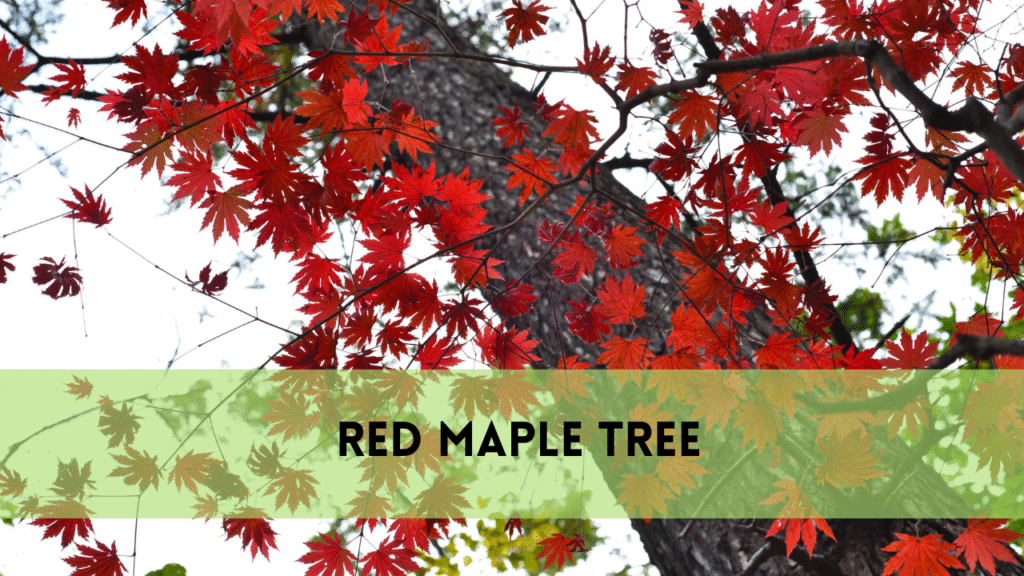Remove Mistletoe From Trees
Mistletoe, often associated with holiday traditions and festive kisses, is more than just a symbol of affection. It’s a parasitic plant that can significantly affect the health of trees. Unlike most plants that draw nutrients from the soil, mistletoe attaches itself to the branches or trunks of trees, tapping into their vascular system. This unique relationship, while seemingly harmless, can have detrimental consequences for the host tree. Learn how to remove mistletoe from trees?
Impact of mistletoe on trees
Specialized structures called haustoria that pierce a tree’s bark and connect to its vascular system reveal the parasitic origin of mistletoe. This permits mistletoe to take water and nutrients, thereby siphoning off crucial resources that the host tree requires for development and survival. Mistletoe infestations can weaken the tree over time, making it more susceptible to disease and environmental pressures.
The importance of removing mistletoe
The importance of removing mistletoe from trees cannot be overstated, as it directly impacts the overall health and longevity of the host tree. Here are some key reasons why removing mistletoe is crucial:
Preserving Tree Health
Mistletoe weakens the host tree by siphoning off nutrients and water. This can result in stunted growth, branch dieback, and increased vulnerability to diseases and pests. Removing mistletoe helps maintain the tree’s health.
Preventing Structural Damage
As mistletoe proliferates, it adds weight to branches, making them more prone to breaking, especially during storms or strong winds. Removing mistletoe reduces the risk of structural damage to the tree.
Enhancing Aesthetic Value
Mistletoe-infested trees often appear unsightly, with clusters of the parasitic plant disrupting the tree’s natural appearance. Removing mistletoe can improve the tree’s aesthetics and overall beauty.
Identify mistletoe
To correctly recognize mistletoe, you must first grasp its features. The following characteristics set mistletoe apart from other plants:
Mistletoe leaves are oval to lance-shaped and range in color from green to yellowish-green. The leaves are usually leathery and alternately placed along the stalk.
Mistletoe has small, spherical white or translucent berries. These berries stand out, especially in the winter when the plant is leafless.
Mistletoe connects to host trees through specialized structures called haustoria that penetrate the bark. It can form a cluster or “bush” on the tree’s limbs or trunk.
Detecting mistletoe infestation
Mistletoe infestations in trees must be detected using a keen eye for certain indications and symptoms. Keep an eye out for the following warning signs:
Mistletoe-infested branches may have different growth patterns than the rest of the tree. This may involve an increase in the number of tiny green shoots.
Mistletoe-infested branches’ leaves may be yellowed or less vivid than healthy branches’ leaves
Affected branches may experience dieback, in which the foliage withers and dies, eventually leading to branch death.
Mistletoe berries become more visible over the winter months. If you notice clusters of white or translucent berries on tree branches, you have mistletoe.
Mistletoe identification is critical for proper removal and tree preservation. Mistaking other growths for mistletoe might result in needless trimming and tree injury.
The importance of Correct identification
Maintaining Healthy Branches:
Proper identification allows you to target mistletoe-infested branches specifically, maintaining the health of the tree’s unaffected parts.
Preventing Regrowth:
By correctly identifying mistletoe, you can ensure total eradication. Incomplete removal may allow mistletoe to regenerate and continue to deplete the tree’s resources.
Conservation:
Accurate identification helps preserve mistletoe’s ecological importance in some habitats. Mistletoe may be a beneficial resource for wildlife in some situations.
The methods for preparing to remove mistletoe and the appropriate safety measures will be covered in the next section.
Preparing for Removal
Before beginning the mistletoe removal treatment, make sure you have all of the necessary tools and equipment. Typical tools include:
Pruning Shears or Saw: Good pruning shears or a small saw are required for cutting mistletoe-infested branches.
Gloves for Safety: Durable gloves will protect your hands from sharp tools and mistletoe.
Goggles for safety: Safety goggles protect your eyes from flying debris throughout the cutting operation.
A ladder may be required to reach and safely remove the mistletoe, depending on the height of the afflicted branches.
The Best time to remove mistletoe
When it comes to removing mistletoe, timing is everything. It’s best to do this task during the tree’s dormant season, which typically occurs in late autumn or winter, when mistletoe is most evident due to the lack of leaves. Furthermore, birds frequently disseminate mistletoe seeds during the winter, giving it an opportune time to inhibit regrowth.
Hand Pruning
- Tools Required: For manual pruning, you will need sharp pruning shears or a saw.
- Locate the mistletoe-infested branches.
- Position yourself safely on a ladder or stable ground.
- Cut several inches beyond the place where the mistletoe is attached to the tree to ensure full removal.
- Dispose of the mistletoe properly.
Girdling
Girdling entails removing a strip of bark and cambium layer around the branch, effectively cutting off the mistletoe’s nutrient supply.
Girdling Methodology Mistletoe:
- Find the mistletoe-infested branch.
- Make two cuts around the branch, one a few inches above the mistletoe cluster and one a few inches below.
- Remove the bark and cambium layer between the cuttings.
- Remove the bark and cambium strip securely.
Cutting and scraping
Steps for Cutting and Scraping Mistletoe:
- This procedure requires scraping with a knife or sharp tool.
- Determine the mistletoe growth on the branch.
- Using a sharp knife or tool, carefully cut away the mistletoe.
- After cutting, scrape away any leftover mistletoe tissue.
- Safely dispose of the mistletoe.
Chemical control of mistletoe
Chemical mistletoe treatment entails using herbicides to efficiently clear mistletoe infestations from trees. While manual removal procedures are frequently preferable due to their precision and lesser environmental impact, chemical control may be required in some cases.
Selecting the Right Herbicide
Glyphosate-Based Herbicides:
Glyphosate-based herbicides are broad-spectrum herbicides that are effective against a variety of plants, including mistletoe.
These herbicides are often used as a foliar spray directly on the mistletoe foliage.
Glyphosate-based herbicides can be successful at killing mistletoe, but they can also harm nearby vegetation if not used correctly.
Herbicides Based on Triclopyr:
Triclopyr is another herbicide often used to eliminate mistletoe. Triclopyr-based herbicides, like glyphosate, can be administered as a foliar spray. Riclopyr is effective against mistletoe and has less of an impact on non-target plants than glyphosate.
Ethephon:
Ethephon is a plant growth regulator that can be used to manage mistletoe.
It is commonly administered as a foliar spray straight onto the mistletoe.
Ethephon can be effective in getting mistletoe to fall off the host tree, but it may take numerous treatments.
Ammonium Sulphate:
Ammonium sulfate is frequently used as a surfactant or adjuvant to increase the efficiency of other herbicides.
It is blended with other herbicides and sprayed in accordance with the directions provided with the primary herbicide.
Professional-Grade Herbicides:
In some circumstances, professional arborists may use specialized herbicides specifically formulated for mistletoe control. Injections or targeted applications are two examples of application methods. These herbicides are normally highly effective, although they may necessitate professional skill for safe and exact administration.
Application Method and Safety Precautions
- Read and follow the directions on the herbicide label carefully. This covers dose information, application methods, and safety considerations.
- Apply the herbicide during the dormant season, when the mistletoe is most noticeable due to the absence of leaves. This is commonly in the late autumn or winter.
- Wear adequate protection gear, such as gloves, safety goggles, and protective clothing, to avoid coming into contact with the herbicide.
- Take steps to prevent herbicide drift onto non-target plants or locations. Protect neighboring plants and cover the ground if required.
- Apply the pesticide directly to mistletoe clusters. Depending on the herbicide, this could entail spraying, injecting, or brushing the pesticide onto the mistletoe.
- Clean all herbicide application equipment thoroughly, and dispose of any unused herbicide according to local rules.
- Monitor the treated mistletoe for symptoms of decline or dieback. It could take some time for the pesticide to take action.
FAQS
1. What is mistletoe, and why is it a concern for trees?
Mistletoe is a parasitic plant that attaches itself to trees and shrubs. It derives water and nutrients from its host, which can weaken the tree, lead to reduced growth, and make it more susceptible to diseases and pests.
2. How can I identify mistletoe on my trees?
Mistletoe is typically recognized by its clusters of green leaves and small, white, or translucent berries during the winter months. It often stands out as an abnormal growth on the tree’s branches.
3. Is mistletoe removal necessary, or can I leave it on my tree?
Mistletoe removal is recommended, especially if you want to preserve the health and aesthetics of your tree. Leaving mistletoe unchecked can lead to long-term damage and reduced tree vitality.
4. Can I remove mistletoe myself, or should I hire a professional?
Smaller infestations may be manageable for homeowners, but for extensive or high-up infestations, it’s advisable to consult with a professional arborist or tree care specialist for safe and effective removal.
Conclusion
Finally, mistletoe removal is critical for preserving the health and beauty of your trees. By correctly recognizing mistletoe, preparing for removal, and applying manual or chemical management methods, you may effectively safeguard your trees from the damaging impacts of this parasitic plant. When dealing with severe infestations or precious tree species, always prioritize safety and consider seeking professional guidance.




